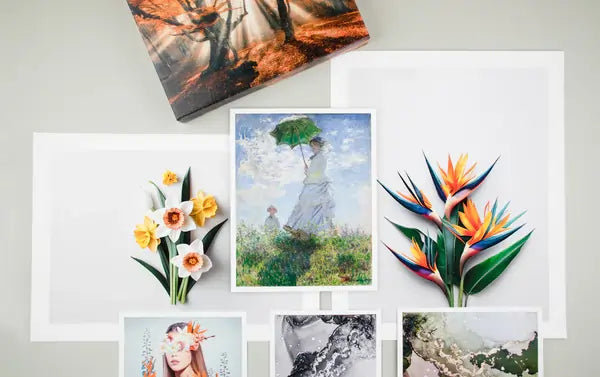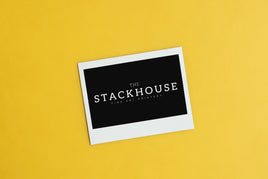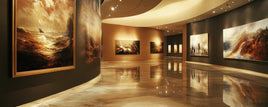When you hear the term "museum-quality art print," it usually refers to more than just a nice image on paper. Museum-quality printing involves a higher level of craftsmanship, color accuracy, and material integrity that ensures your artwork not only looks exceptional but also stands the test of time. In this article, we will explore what sets true museum-quality prints apart from standard prints and why artists and collectors value them so highly.
1. The Materials: Archival Papers and Pigment Inks
Museum-quality prints are made using archival materials that resist fading, yellowing, and deterioration over time. These prints are typically produced with giclée printing, which uses pigment-based inks on fine art papers or canvas. The inks bond deeply with the surface, creating vibrant colors and subtle gradients that can last for over a century when properly cared for.
Standard prints, on the other hand, often use dye-based inks on photo paper or poster paper. While these can look vivid initially, they are more susceptible to fading when exposed to light and humidity.
2. The Detail and Resolution
Giclée and other museum-quality printing techniques prioritize fine detail and tonal precision. Each image is printed at a minimum of 300 DPI (dots per inch), ensuring crisp lines and smooth color transitions. This level of resolution makes it possible to reproduce every brushstroke or grain of film with stunning clarity.
Standard prints may use lower resolutions or faster production methods designed for volume rather than fidelity. The result can be a noticeable loss of detail and texture, especially when viewed up close.
3. The Printing Process and Calibration
Professional art printers use color-calibrated workflows to maintain consistency across editions. At The Stackhouse Printery, every printer is carefully profiled using ICC color management and checked for tonal accuracy before production. This ensures that the printed result matches the original artwork as closely as possible.
Standard printing workflows, such as commercial offset or consumer inkjet printing, often skip calibration or rely on automatic color correction. While efficient, these systems prioritize speed and cost over precision.
4. Longevity and Archival Value
True museum-quality prints are designed to last for decades, if not centuries. The combination of pigment inks, acid-free media, and careful handling ensures that your artwork remains vibrant and stable for generations. These qualities make them ideal for galleries, collectors, and artists selling limited editions.
By contrast, standard prints are typically meant for short-term display or decorative use. Over time, their colors may fade, and the paper may yellow or curl depending on environmental conditions.
5. The Presentation and Finishing
Finishing options also set museum-quality prints apart. From mounted and gallery-wrapped canvas to matted or retail-ready formats, these prints are made to be displayed and preserved. Each piece is handled with white-glove care and packaged to protect it during transit and storage.
Standard prints are often mass-produced and shipped without additional finishing. They may still look beautiful but rarely carry the same tactile or professional presentation as fine art prints.
6. Why Artists Choose Museum-Quality Printing
For professional artists, choosing museum-quality printing is about more than appearance. It is about creating a body of work that reflects their standards of craftsmanship. Collectors notice the difference in depth, richness, and surface quality. Whether for exhibitions, commissions, or limited editions, investing in premium printing elevates your work and enhances its value.
Experience True Museum Quality
Discover how The Stackhouse Printery brings gallery-grade printing to every artist and photographer. Choose from our collection of fine art papers and canvases, or request a free sample kit to compare media options in person.









